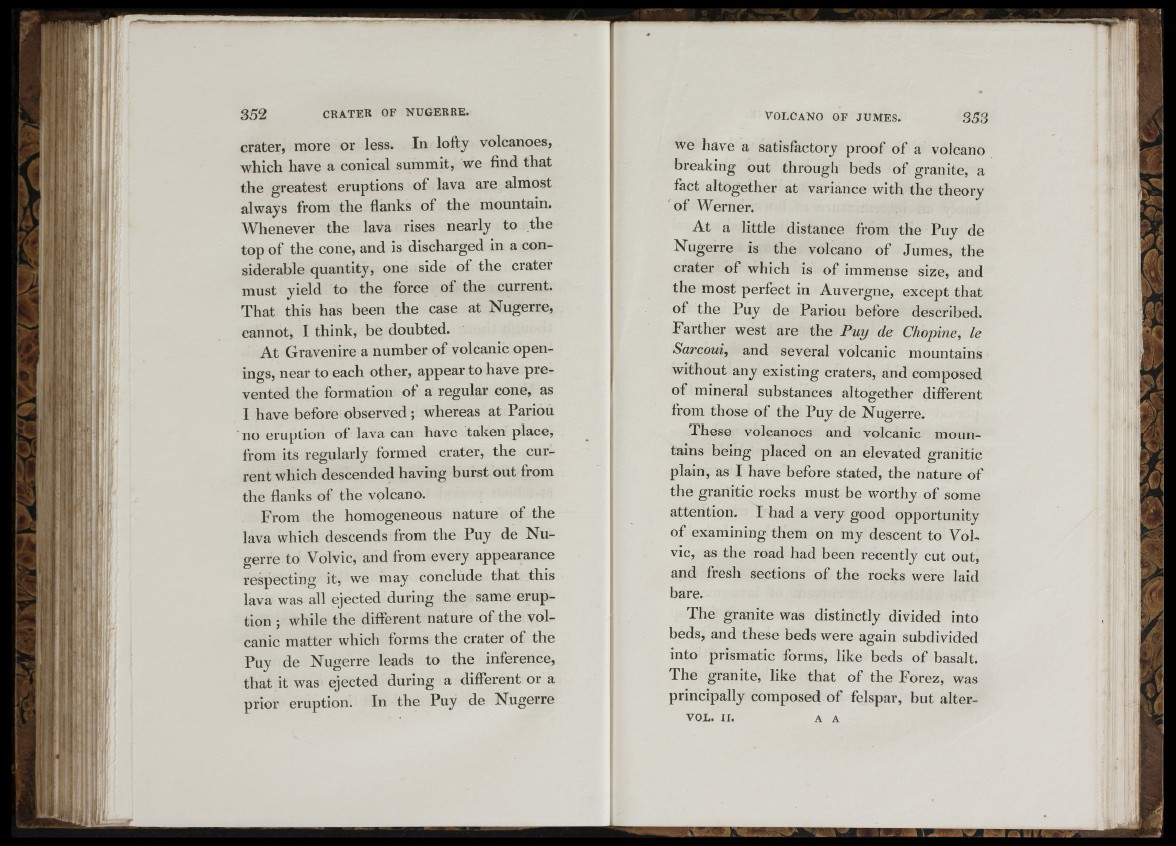
t e
xlm
n
I ' i :
X, r
,! ' '<
i
li ij
■'il'
;j "!
" , Ini
I Ü/I (■
im
352
crater, more or less. In lofty volcanoes,
which have a conical summit, we find that
the greatest eruptions of lava are almost
always from the flanks of the mountain.
Whenever the lava rises nearly to the
top of the cone, and is discharged in a considerable
quantity, one side of the crater
must yield to the force of the current.
That this has been the case at Nugerre,
cannot, I think, be doubted.
At Gravenire a number of volcanic openings,
near to each other, appear to have p revented
the formation ot a regular cone, as
I have before observed ; whereas at Pariou
no eruption of lava can have taken place,
from its regularly formed crater, the current
which descended having burst out from
the flanks of the volcano.
From the homogeneous nature of the
lava which descends from the Puy de N u gerre
to Volvic, and from every appearance
respecting it, we may conclude that this
lava was all ejected during the same eruption
; while the different nature of the volcanic
matter which forms the crater of the
Puy de Nugerre leads to the inference,
that it was ejected during a different or a
prior eruption. In the Puy de Nugerre
we have a satisfactory proof of a volcano
breaking out through beds of granite, a
fact altogether at variance with the theory
of Werner.
At a little distance from the Puy de
Nugerre is the volcano o f Jumes, the
crater o f which is of immense size, and
the most perfect in Auvergne, except that
o f the Puy de Pariou before described.
Farther west are the Fuy de Chopine, le
Sarcoui, and several volcanic mountains
without any existing craters, and composed
o f mineral substances altogether different
from those o f the Puy de Nugerre.
These volcanoes and volcanic mountains
being placed on an elevated granitic
plain, as I have before stated, the nature of
the granitic rocks must be worthy o f some
attention. I had a very good opportunity
of examining them on my descent to Volvic,
as the road had been recently cut out,
and fresh sections of the rocks were laid
bare.
The granite was distinctly divided into
beds, and these beds were again subdivided
into prismatic forms, like beds of basalt.
The granite, like that of the Forez, was
principally composed of felspar, but alteriS